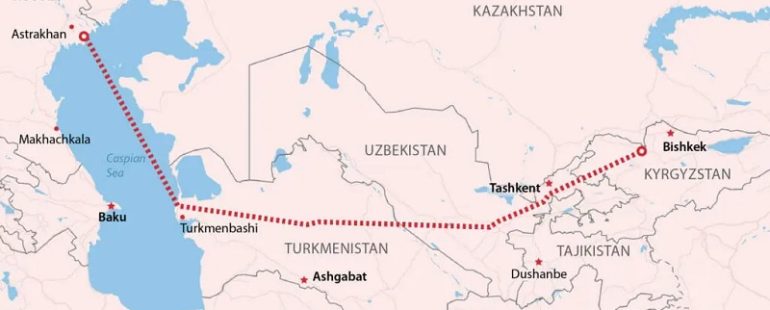
International Export to Kyrgyzstan via Iran
Introduction
Kyrgyzstan, a landlocked nation situated in Central Asia, is known for its diverse culture, stunning natural landscapes, and strategic geopolitical position. With a growing economy, Kyrgyzstan presents numerous opportunities for international trade, especially for countries like Iran, which has been preparing to expand its export footprint in Central Asia. This article will explore the dynamics of exporting goods to Kyrgyzstan via Iran, highlighting the benefits, trade routes, regulatory considerations, and key sectors for export.
The Importance of Iran as an Export Route
Iran serves as a crucial transit hub for goods destined for Kyrgyzstan due to its geographical proximity and established logistics infrastructure. With access to the Persian Gulf and a network of railways and roads, Iran can effectively connect suppliers from various countries to the Central Asian market.
Strategic Location
Iran’s unique position allows it to act as a corridor for goods moving from various regions, including Europe, the Middle East, and Asia. This positional advantage minimizes transit times and costs, making it a lucrative option for exporters aiming to reach Kyrgyzstan.
Infrastructure Development
Iran has been investing heavily in transportation infrastructure to facilitate trade. The completion of rail projects, road upgrades, and the enhancement of port facilities has improved the efficiency of moving goods through Iranian territory towards Central Asia.
Key Sectors for Export
When considering exports to Kyrgyzstan via Iran, it is essential to identify sectors with robust demand and potential for growth.
1. Agricultural Products
Kyrgyzstan has a rich agricultural landscape, and there is ongoing demand for diverse agricultural products. Exporters from Iran can capitalize on this demand by supplying fruits, vegetables, and grains. Additionally, agro-technology and equipment also represent significant opportunities.
2. Textile and Apparel
The textile industry is a crucial part of Kyrgyzstan’s economy. High-quality Iranian textiles, apparel, and raw materials such as cotton can attract interest in the Kyrgyz market.
3. Construction Materials
With ongoing infrastructure developments in Kyrgyzstan, construction materials like cement, steel, and other building supplies are in high demand. Iranian exporters can supply these materials, benefiting from competitive pricing and proximity.
4. Consumer Goods
Several categories of consumer goods, including electronics, household items, and personal care products, have growing markets in Kyrgyzstan. Iranian manufacturers can seek to establish partnerships with local distributors to facilitate their entry into this sector.
5. Machinery and Equipment
As Kyrgyzstan develops its industrial base, the demand for machinery and equipment will grow. Iran’s relatively advanced industrial sector can fulfill this need, particularly in sectors like agriculture, mining, and food processing.
Trade Routes from Iran to Kyrgyzstan
Land Routes
The overland transport of goods from Iran to Kyrgyzstan primarily takes place via several key transit points, including:
- The Iran-Turkmenistan Border: This route presents a reliable means to access Kyrgyzstan. From Iran, goods can enter Turkmenistan and continue northward.
- The Iran-Uzbekistan Border: By transporting goods to Uzbekistan, exporters can subsequently move them to Kyrgyzstan, taking advantage of established trade agreements.
- The North-South Corridor: This corridor connects Central Asia to the Persian Gulf, enhancing connectivity and reducing transit times.
Rail Transport
Rail transport is a significant mode of international shipping, particularly for bulk goods. Iran has undertaken several initiatives to enhance its railway network, which can facilitate the movement of goods to Kyrgyzstan effectively.
Regulatory Considerations
To successfully export goods to Kyrgyzstan via Iran, it is crucial to understand the legal and regulatory frameworks governing trade.
Customs Regulations
Understanding customs procedures in both Iran and Kyrgyzstan is essential. Exporters must navigate documentation requirements, tariffs, and customs duties. Cooperation with logistics experts can ease this process.
Trade Agreements
Iran and Kyrgyzstan are part of various trade agreements that may influence export conditions. Keeping abreast of any changes to these agreements is important for ensuring compliance and maximizing trade opportunities.
Quality Standards and Certifications
Compliance with quality standards and obtaining necessary certifications is vital for entering the Kyrgyz market. Exporters should familiarize themselves with local regulations concerning product quality, safety, and standards.
Challenges and Risks
While there are ample opportunities for exports to Kyrgyzstan via Iran, several challenges and risks are inherent in international trade:
- Political and Economic Stability: Political relations between countries can influence trade dynamics. Exporters should remain informed of any shifts in policies or diplomatic relations.
- Logistical Challenges: Inefficiencies in transportation and supply chain disruptions can affect timely delivery.
- Cultural Barriers: Understanding cultural nuances and establishing relationships with local partners is crucial for successful market penetration.
- Market Entry Strategies: Developing effective market entry strategies, including branding and marketing tailored to Kyrgyz consumer preferences, is essential for overcoming competition from domestic producers and other foreign players.
Conclusion
The potential for international export to Kyrgyzstan via Iran is significant, given the favorable geographical context, emerging markets for various goods, and ongoing infrastructure improvements in both countries. Proper planning, understanding of the regulatory landscape, and effective logistical strategies can help exporters navigate challenges and seize opportunities in this growing market. As Kyrgyzstan continues to evolve economically and develops more trade relationships, Iran is poised to play an integral role in facilitating access and ensuring a steady flow of goods to this vibrant Central Asian nation.

Comments (No Responses )
No comments yet.